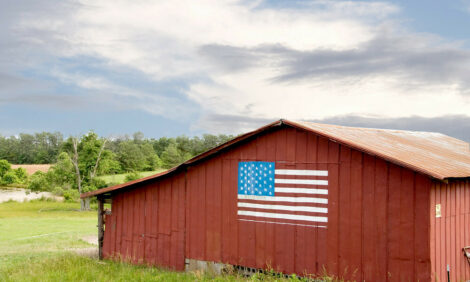



Ontario's Bird Flu Control Zone Extended
CANADA - The Canadian Food Inspection Agency (CFIA) has established a second Avian Influenza Control Zone in Ontario to control the movement of animals, products and equipment within the zone to minimise disease spread.The boundary of this second Avian Influenza Control Zone covers a 10-km radius from the second premises confirmed to be infected with avian influenza. The zone spans across a portion of Oxford County and Waterloo County, Ontario.
All premises having poultry on site located within the second Avian Influenza Control Zone have now been placed under quarantine; however, only the second infected premises has shown any signs of illness. The Agency is monitoring the additional quarantined premises closely for any signs of disease.
The establishment of individual quarantines and the Avian Influenza Control Zone is part of an internationally accepted practice to allow trade to continue from non-infected areas of a country. The establishment of this second zone will continue to contribute to the alleviation of market access restrictions.
Impact on poultry farmers
London Free Press reports that poultry producers across Ontario are closely watching the avian flu outbreak in Oxford County that so far has claimed nearly 75,000 birds and put dozens of farms under quarantine.
For many farmers, an avian flu infection or quarantine could mean the loss of not only their flocks, but also their livelihood.
A virus such as the H5N2 avian flu found in Oxford can wipe out a population of turkeys or chicken in a matter of days. But even the loss of an entire flock is second to the months of lost profits.
It’s not just a concern for infected producers, but also for those with healthy birds under quarantine.
One farmer said: “If they’ve got birds in their barn now, when they’re ready to go to market they can apply for, and get permission, to market them.
“But the big thing is once your barn is empty, you’ve sold those birds, you can’t put new ones in. So that’s profit potential gone — and your income gone — until the quarantine is lifted. It’s hard to say how long that’s going to take, but it’s months, not days,” he told London Free Press.
International trade affected by outbreaks
CFIA says some of Canada's trading partners, including the European Union and the United States, have recognised this second control zone and trade in products originating outside the two zones will be able to resume shortly. It is working closely with industry and other international partners to reaffirm continued trade based on ongoing effective control measures and certification requirements.
The CFIA has completed scientific testing at the Agency's National Centre for Foreign Animal Disease (NCFAD) to sequence the virus of this particular H5N2 strain of avian influenza. This strain of the virus currently present in Ontario is nearly identical to the strain identified at the initial infected premises, as well as in British Columbia at the end of 2014. It also closely matches the strain isolated in Washington State, US. Avian influenza strains circulate in migratory wild birds and waterfowl which pose a risk for spreading the disease.
Avian influenza does not pose a risk to food safety when poultry and poultry products are properly handled and cooked. Avian influenza rarely affects humans that do not have consistent contact with infected birds.
As the CFIA's investigation progresses, any additional control measures will be assessed and put into place as appropriate.
Poultry farmers are reminded to practice a high level of biosecurity to reduce the risk of disease spread, and report any suspicious symptoms in their flocks to the CFIA.









